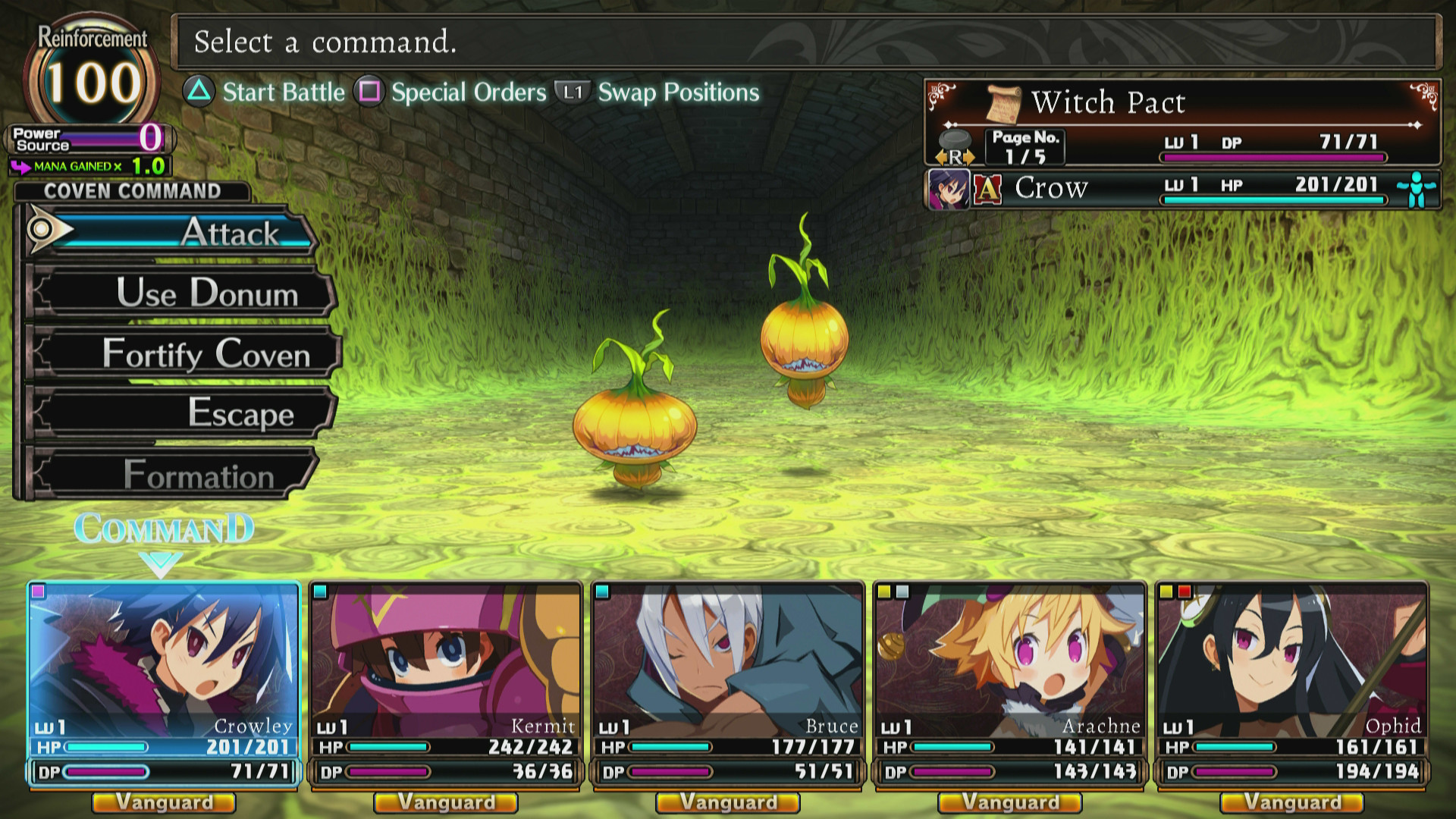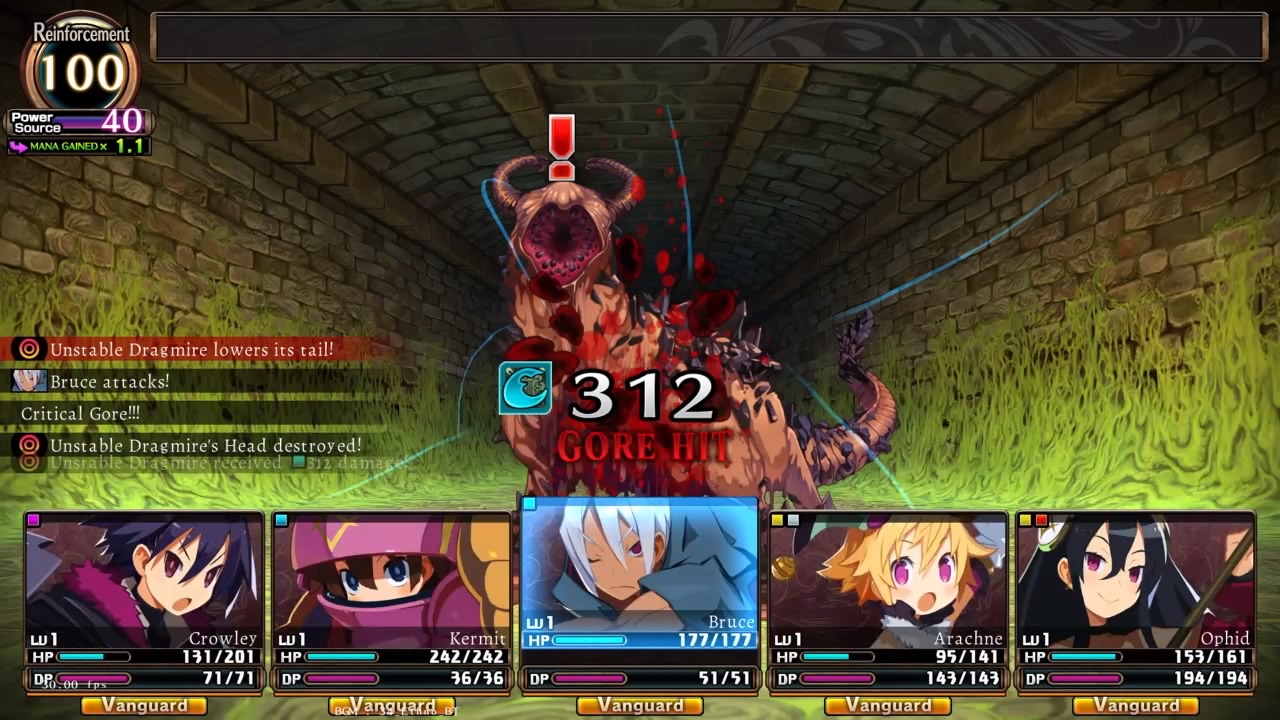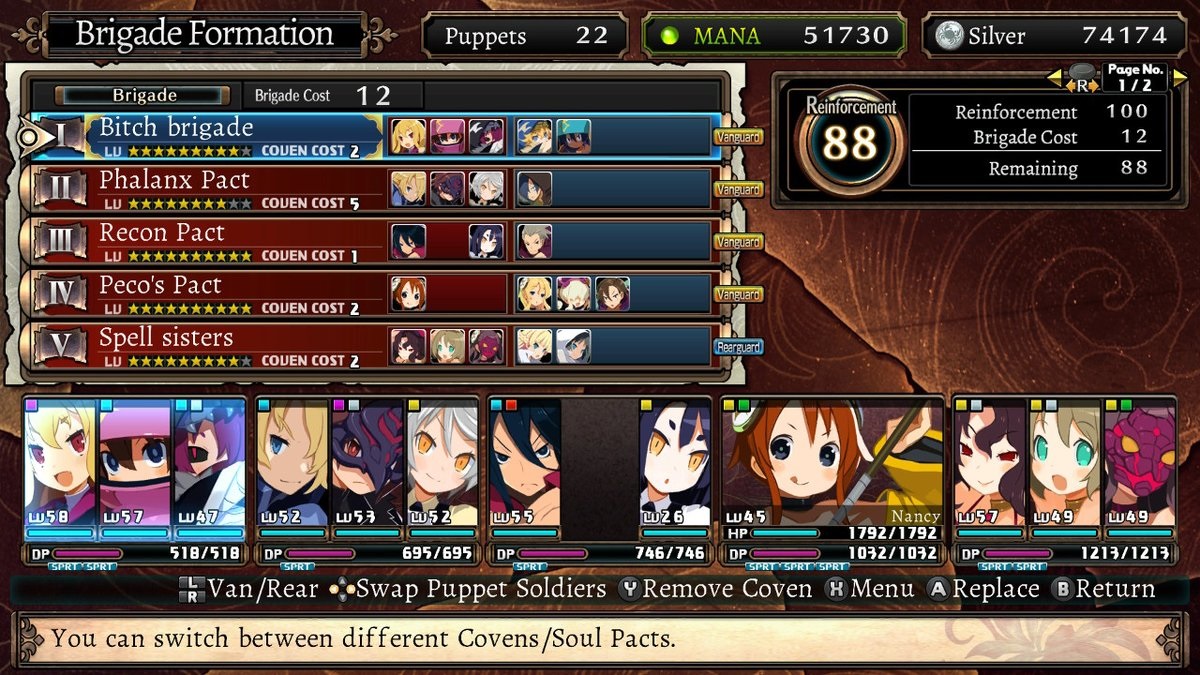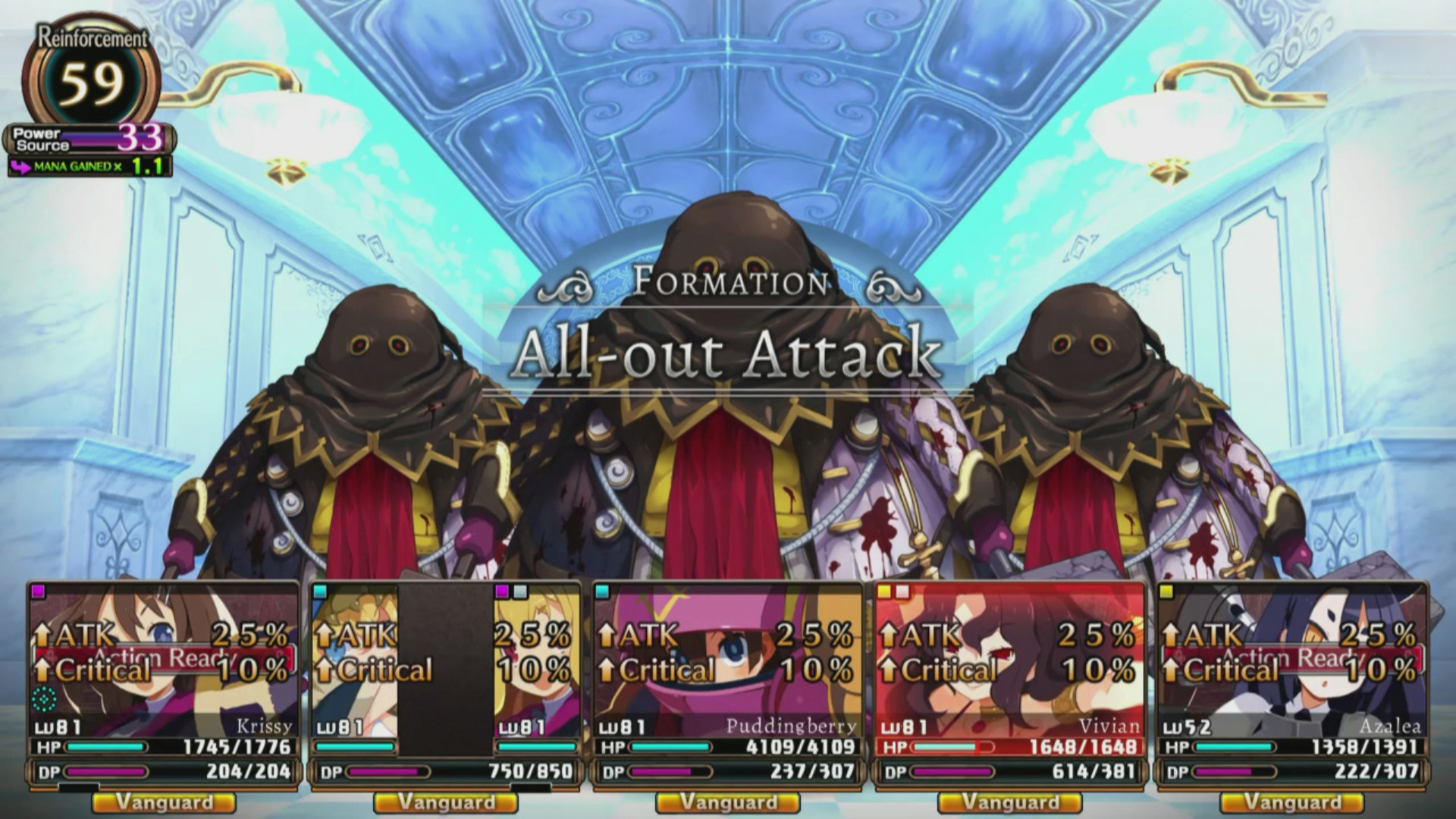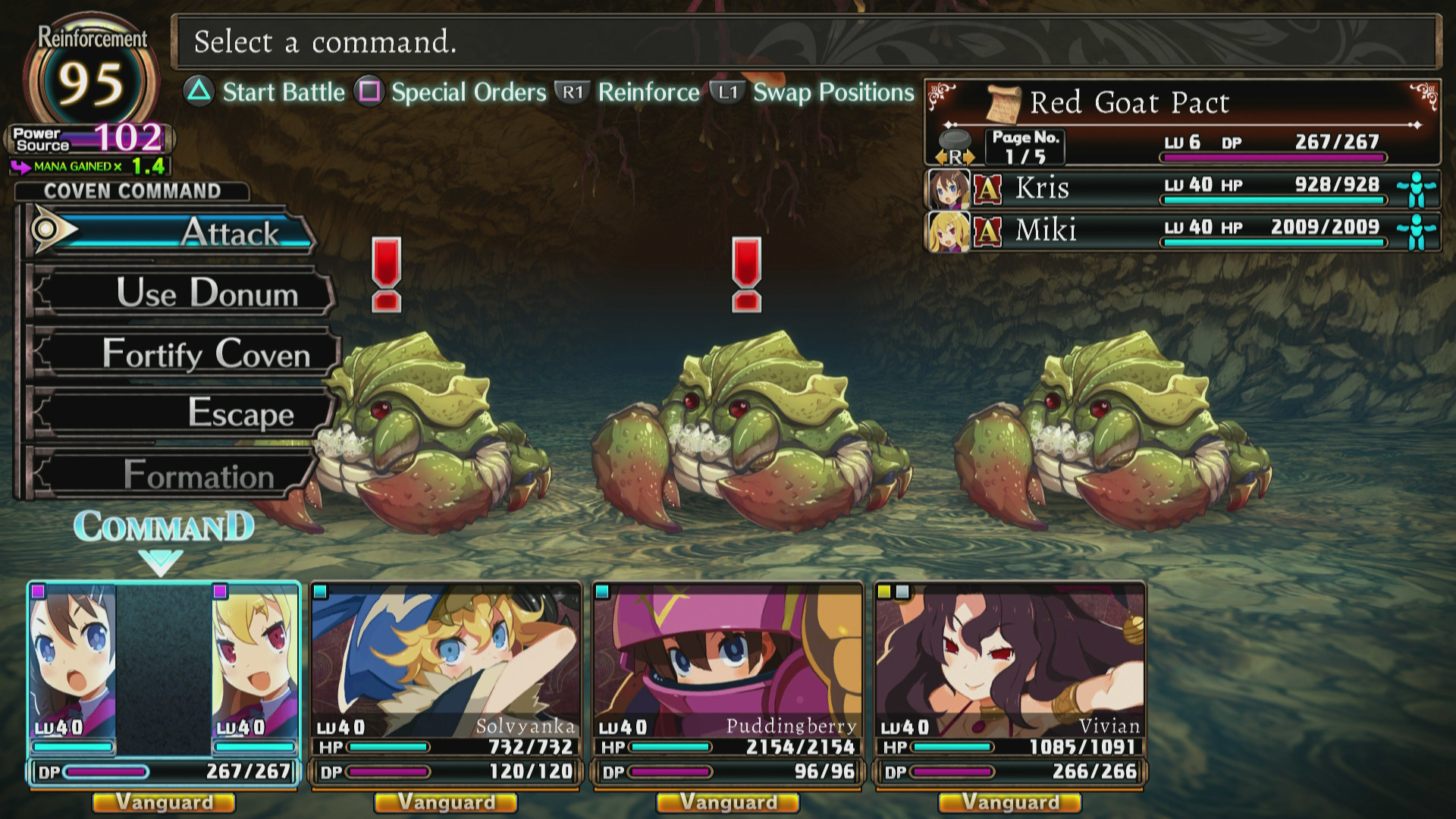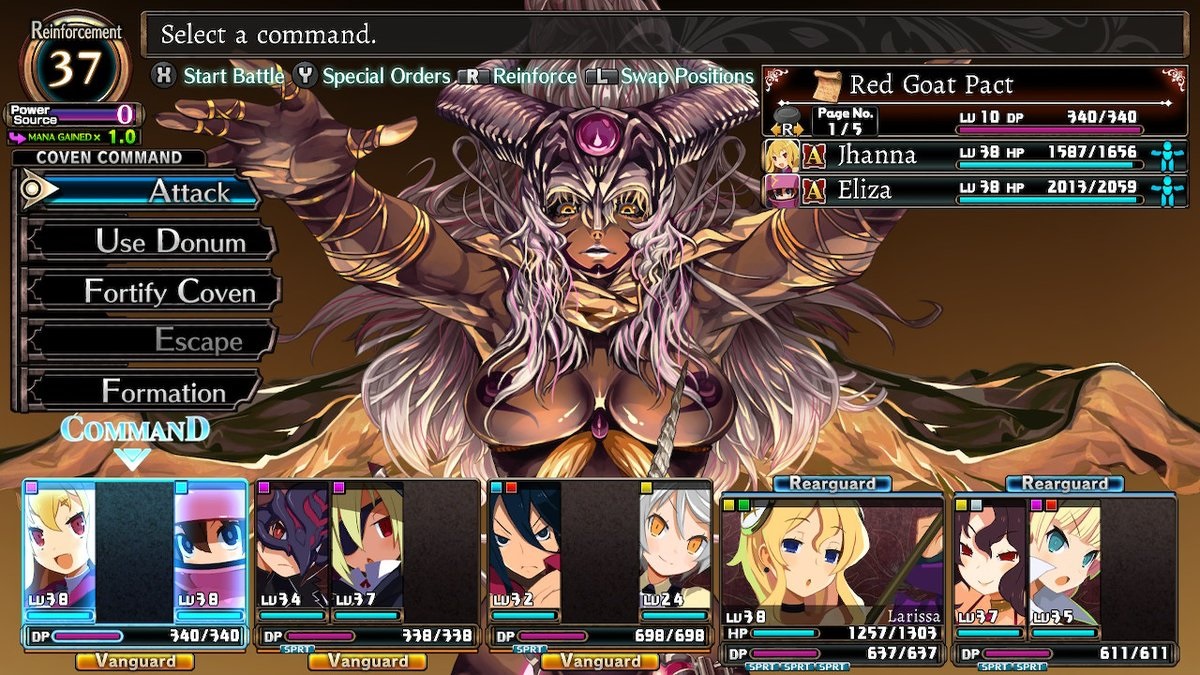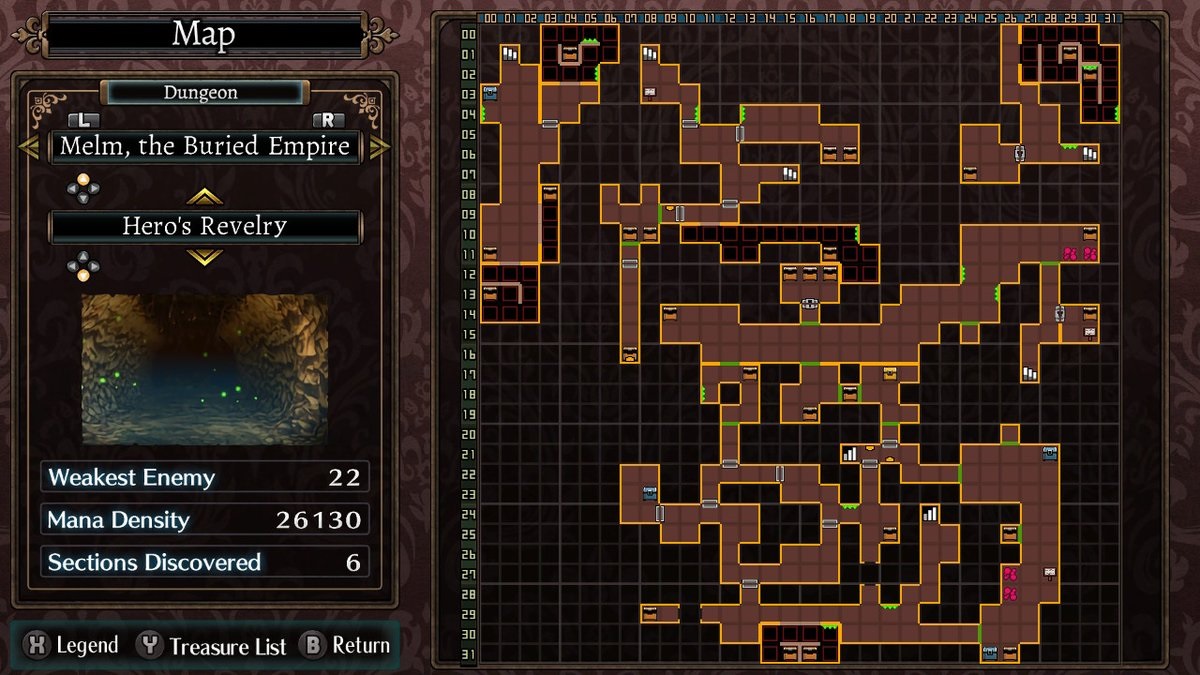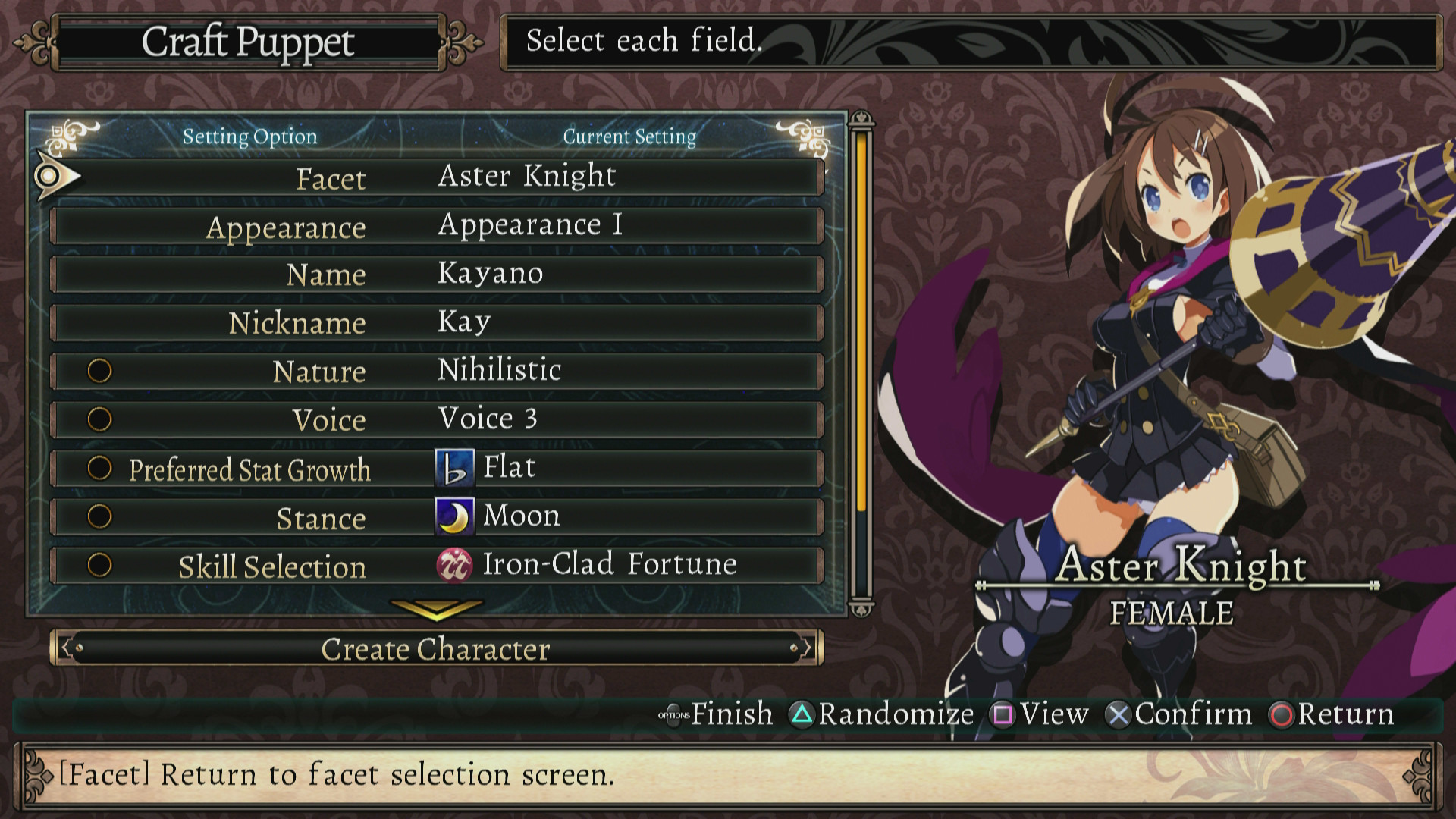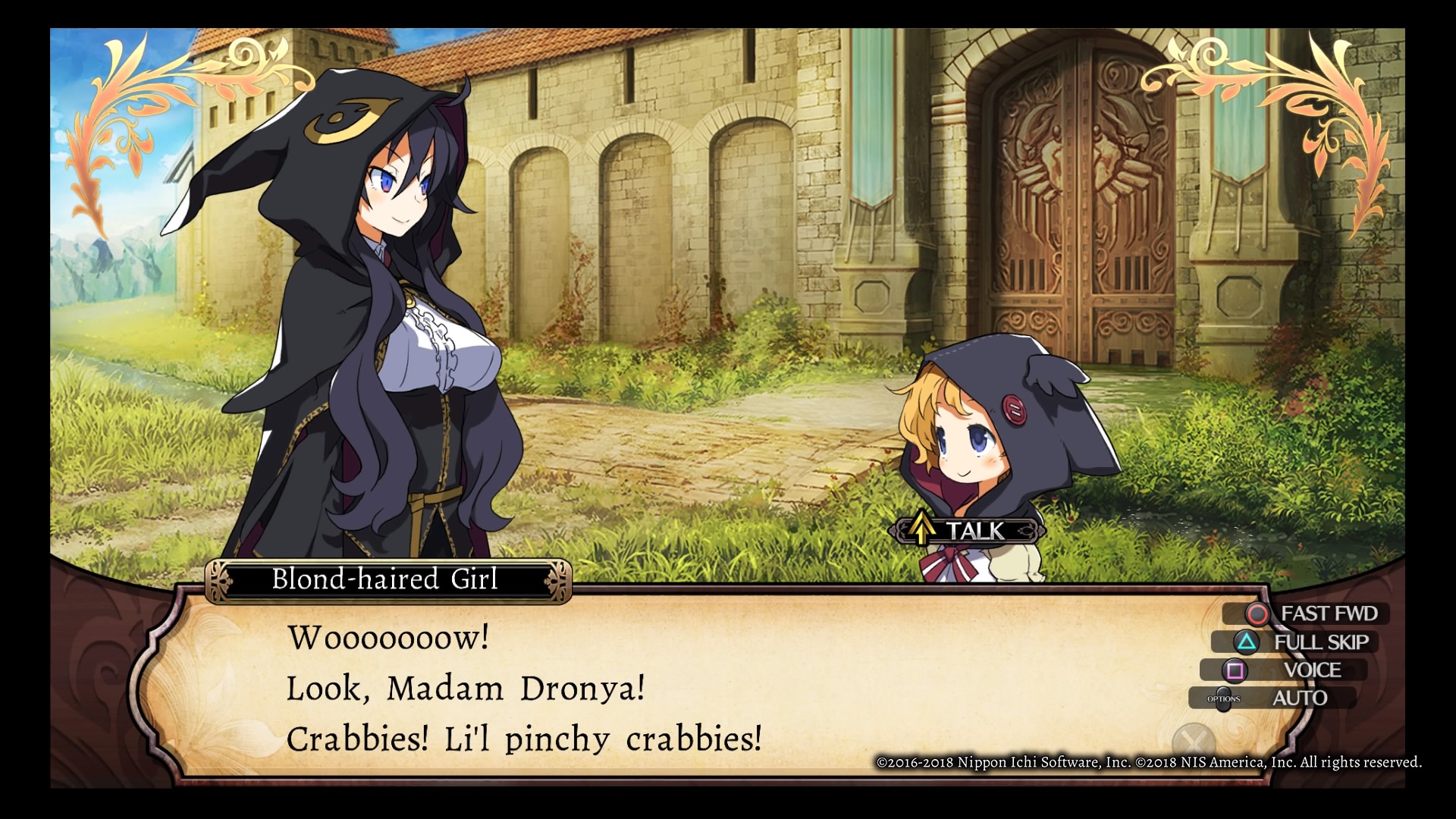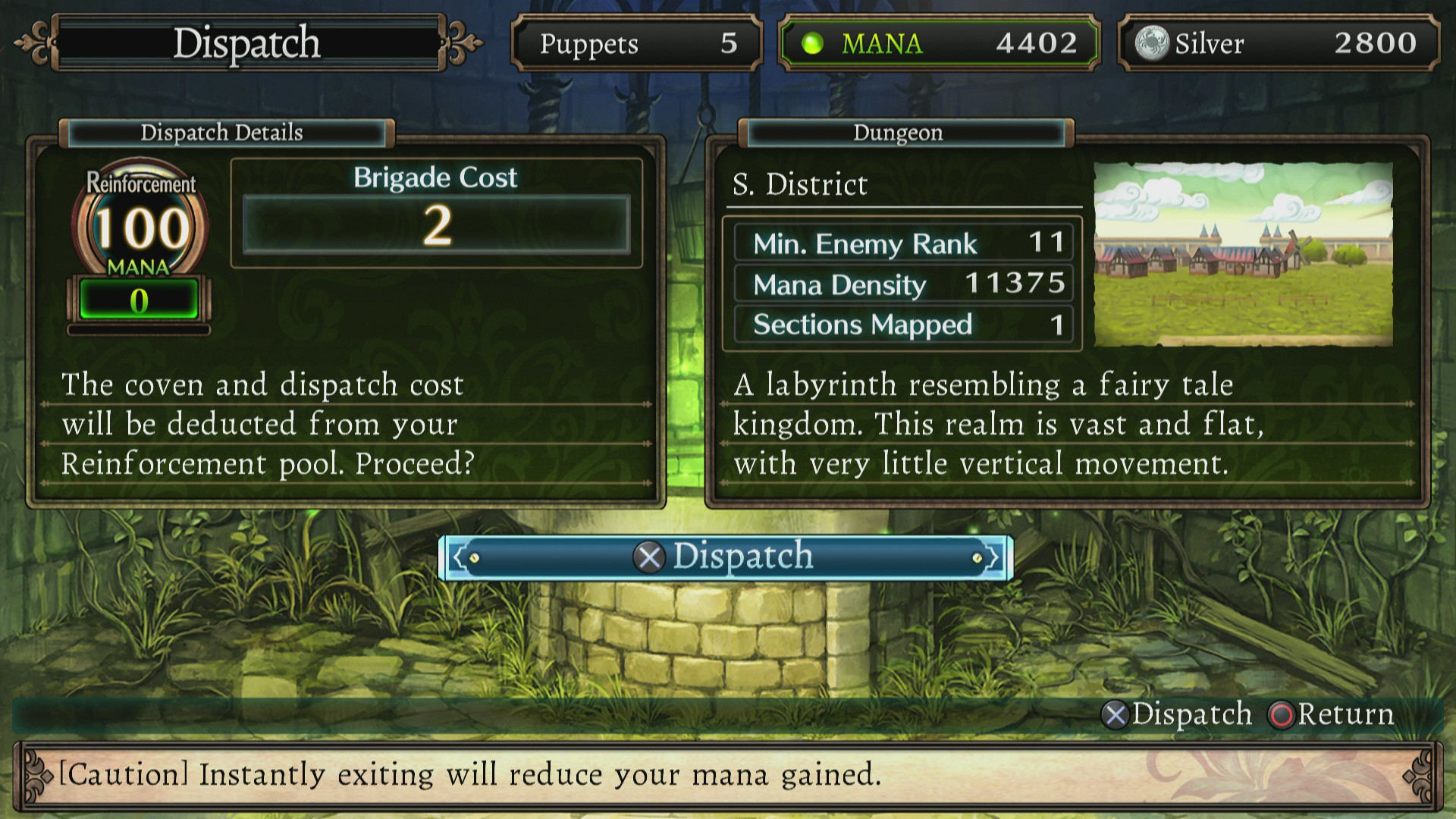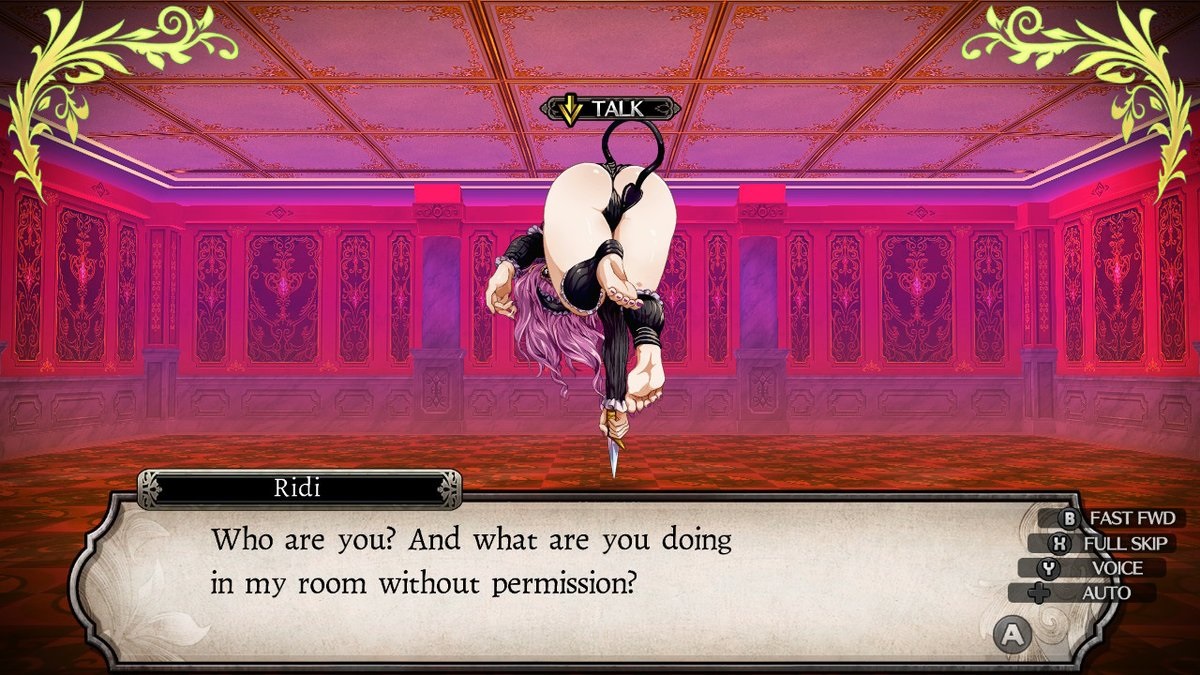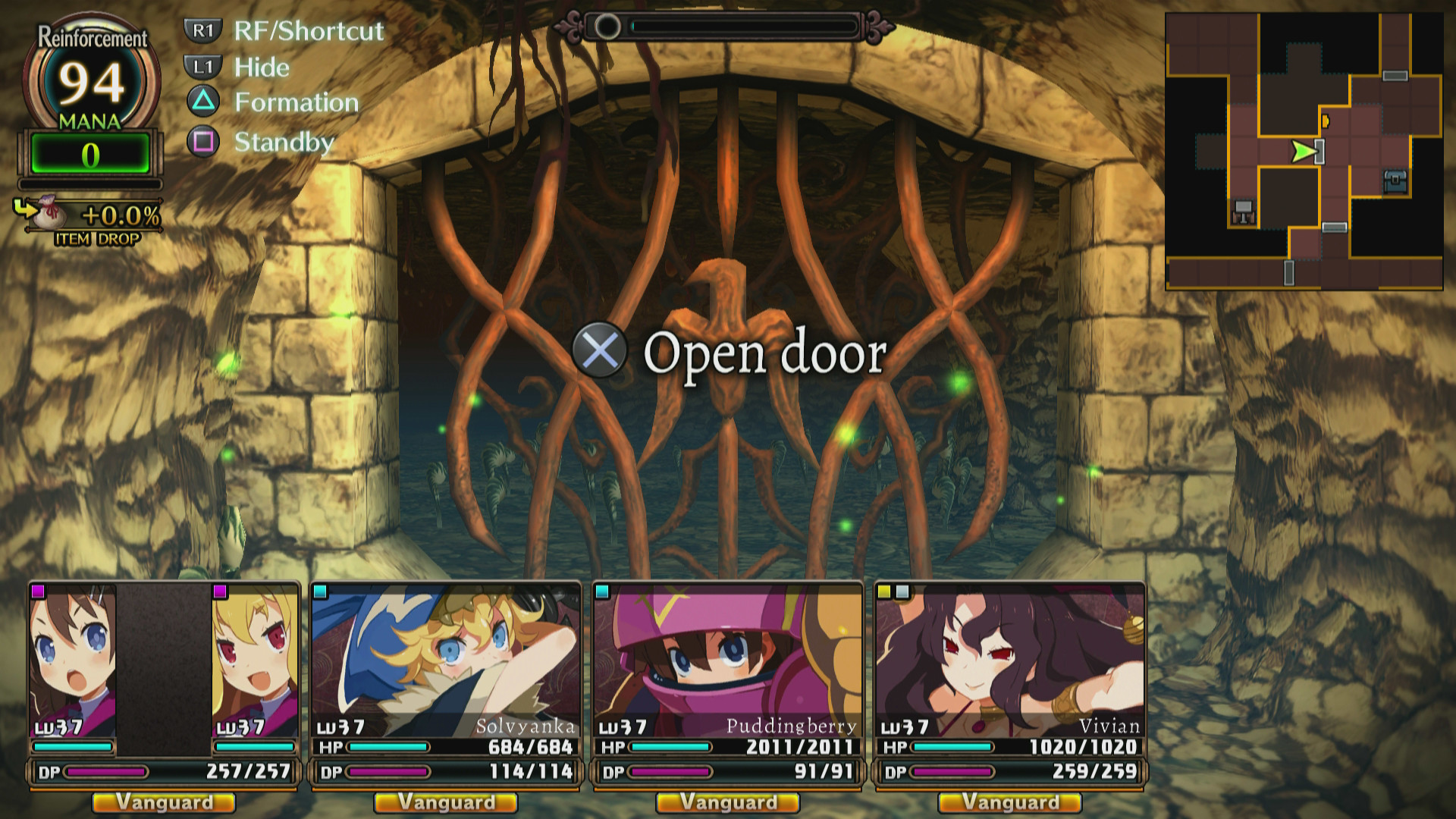As much as I love Gridders/Dungeon-Crawlers/Wizardry Clones, they’ve always had one terrible criticism leveled at them that even a diehard RPG’er like me cannot deny the merit of. That disparagement would be the fact that while challenging and complex, the standard gridder suffers from “6 headed hydra” syndrome.
What that means is that as diverse as your party composition may be, those 5-6 people attacking and casting spells are just one single entity with multiple heads that take damage, since all of their abilities and skills are easily interchangeable and not as unique as the game rules would imply. It’s a frequent charge levied at the genre, and while I don’t pay it any mind, I will admit it isn’t too far from the truth.
It reminds me of the reputation that the turn-based strategy game on the consoles got saddled with. How moderately successful (but still quite niche) games like Ogre Battle, Shining Force, and Final Fantasy Tactics were all considered number-crunchers that just covered up the simplistic nature of the combat by throwing colorful sprites onto your troops and pretending they were something other than a simple hit point tally and a defense stat.
That fair-but-unfair critique of the genre was killed off entirely in 2003 when Nippon Ichi Software released the first Disgaea game. Disgaea added in the variance, class diversity, tweaking options and min/max’ing that no other strategy game had really touched upon until that point. Why am I bringing this all up? Well, apparently NISA is trying to do the same thing to the gridder/Wizclone subgenre with their newly released dungeon-crawler Labyrinth of Refrain: Coven of Dusk.
Labyrinth of Refrain: Coven of Dusk
Publisher: NIS America
Developer: Nippon Ichi Software
Platform: Windows PC, PS4, Nintendo Switch (Reviewed)
Release Date: September 18th, 2018
Players: 1 Player
Price: $49.99
Let’s get one thing out of the way right now: This game has a very heavy Disgaea influence. Not just in the gameplay mechanics, but also in the art, music, and dialog as well. It’s as if someone simply took Disgaea, broke it down, then rebuilt the game as a Wizardry clone like a kid would knock down a Lego house and rebuild it into a spaceship. The individual parts of Disgaea are still there, but just shuffled.
To some, especially the usual hardcore gridder crowd that tends to be very curmudgeonly, that may be a huge turn-off. After all, the game’s story includes a perverted lesbian nun that attempts to rape the main (female) character and a town full of country bumpkins that talk and act like they were unused extras from the movie Fargo. To purists, that may be a deal breaker, but to those of us who loved the ridiculous nature of the Disgaea games, it’s just all part of the charm.
So how did they solve the “six headed hydra” problem, you ask? First of all, you aren’t just limited to 5 characters in your party. Sure, at first, that’s all you’re going to get and you will have to live with it. However, not too long after that first dungeon boss, you’ll begin to receive items called “Pacts”.
What these pacts are is a set of rules and formations that you put into one of those five character slots, and that “pact” determines not only what character you can use in what slot, but how many you can use in that slot as well.
To break it down further and help you understand how truly revolutionary this mechanic is, think of the pact as a party formation in a typical RPG. The pact has rules that state what gender, class, stance, or personality those who are assigned to it may be. You could have anywhere from 1 to 6 people allowed into that individual pact, so long as they meet its statistical requirements.
Each character slot is meant for one pact, and each pact can hold anywhere from 1-6 characters, so in theory, once you find enough pacts, you can go down into the dungeon not with a party of 5, but with a small army of 30 soldiers all leveled-up and ready to dominate. Granted, only the first 15 of those will be able to attack directly, but even the ones behind them in support roles will, provided you’re using the correct pacts, add their passive stats to the attackers in combat.
The pact system goes a long way in killing that six-headed hydra syndrome and opens up a truly staggering amount of character and party composition options for the player to tinker with. Spells, stat gains, experience accrual, passive skills, and combat effectiveness are all governed by your pacts, and figuring out how best to juggle them in such a way that meets your needs but also takes advantage of your party’s composition is one of the key talents you’ll have to develop as the player in order to make it through the game.
And good lord are you going to have a rough time with that.
Each of the game’s dungeons, all of which have their own theme and story attached to them, are considerably more difficult than the previous one. By the time I got to the 5th dungeon, I was fighting level 50+ mini-bosses (Think FOEs from Etrian Odyssey) as roaming monsters and getting one-shotted by them long before I even started completely mapping the first floor.
Then there’s the location-based damage to consider. Since your party members are essentially animated “puppets” created by the witch protagonist Dronya, they can get their limbs chopped off in combat if they suffer a severe enough amount of damage.
This will take away the use of whatever item they have equipped to that part of their body as well as permanently lower their hit point total until you go back to town and repair them. What worse is, if their head is the limb that’s severed, you can’t even resurrect them until you completely exit the dungeon and pay a fee to fix them back at Dronya’s wagon.
To be honest, Labyrinth of Refrain is a true ball buster. It’s a dungeon crawler that has absolutely no desire to see you win or succeed. It will throw optional post-end game bosses at you in the middle of a dungeon and then laugh as you’re nailed without warning.
It will penalize you for staying in a dungeon and collecting loot for too long by randomly changing one of the normal monsters to a unique named “boss” monster with 10x their normal stats and take away your loot if you lose. The game wants you to prove to it that you are the ultimate gridder player, and if you aren’t, you can go back to playing Etrian Odyssey on your 3DS.
Not to berate other wizardry clones out there, but Labyrinth of Refrain is light years ahead of them in complexity, challenge, and amount of content present in the base game. It even brings back the idea that the dungeon itself is a monster you have to fight by putting tons of damage tiles, impassable terrain, toxic cloud rooms, mandatory pitfalls, and fixed/unavoidable ambushes in every nook and cranny. Couple that with the “More loot you accrue the more savage the monsters become” mechanic and you can see what I mean.
To counter all this difficulty though, I will give the game credit for giving the player several ways to make themselves powerful. Like Disgaea, min/max’ing is taken to a ridiculous degree, with class re-jiggering, level re-birthing, item tweaking, and petitioning for changes to the rules all being options in the quest to make your party tougher.
Just like Nippon Ichi’s celebrated strategy series, you can transfer and “re-birth” your characters into another body, this time “making their soul more pure” and giving them a higher statistical ceiling. What this does is allow them to bring their current class skills into a new class and inherit abilities not normally associated with the new class. It also “clarifies” their soul, resulting in higher stat increases during level-ups and a much higher stat cap as well.
Another method to make yourself stronger is through equipment, which can be made more powerful through the alchemy pot. This basic crafting mechanic can be used to simply make an item better by smashing it together with other similar items, or make an item more “Versatile” by combining it with something that has a feature you want it to have and sacrificing a item that possesses it to the one you want to use. It’s not terribly complex, but it can be abused, and with the difficulty spikes in-between dungeons, you better embrace that abuse.
There’s other little wrinkles to gameplay, such as the Karma system that if you build up too much bad karma (usually from killing what the game considers to be “friendly” monsters), you suffer more critical hits but also perform more crits as well.
There’s also the “witch petition” option, which gives you the ability to spend accrued mana to alter game rules, gain new abilities, or request the RNG to spit out a new piece of equipment. Proper balancing of all these tactics is required to even make it out of the first “world”, and as the game progresses, it demands an ever increasing level of understanding of these systems in order to succeed.
Frankly, that’s the way it should be. What’s so addictive about Labyrinth of Refrain – and what so many modern attempts at recreating Wizardry fail at – is that the game completely avoids that familiar “bell curve” in difficulty where the game starts easy, gets hard, and then suddenly becomes mindbogglingly effortless once you exploit the systems and “power-up”.
Instead, Labyrinth of Refrain, much like me every time I turn the game on, starts hard and stays hard. It continually ups the ante with each new themed dungeon world you unlock, and never once lowers its standards to meet you. I will admit, however, that the game is terribly “Grindy”. Even moreso than Disgaea in that regard, since at least Disgaea had special tiles that magnified experience gain.
While some pacts do have experience boosts, you can only place on or two characters in those slots at a time, so leveling still takes quite a while, and since one-shot kills only become more common the deeper and deeper you go into the game, I didn’t feel that it offered much of a solution.
Still, it’s this challenge and the depth and complexity of the game that I fell in love with, and being able to rename my pacts to things like “The Bitch Brigade” and the “Thot Police” while populating them with sexy anime chicks was worth putting up with it all for.
I was thoroughly impressed with how complete of a game Labyrinth of Refrain was and the constant increasing of depth in the way of new options and challenges as the game progressed. It never gets old, even 60-80 hours in, and that’s saying something for a grid-based, oldschool dungeon crawler.
The only real gripe someone may have would be in the fact that it is, for good or for ill, a NISA game. NISA does have a spotty reputation in the hardcore JRPG community due to its meme-filled translations, shoddy localization, bugginess, and the extreme screw job they subjected Ys fans to with Lacrimosa of Dana.
Yet, even knowing all of this, I feel that Labyrinth of Refrain is worth your time if you’re into dungeon crawlers, and is right up there with Demon Gaze as the best of the genre’s new eastern-created breed. It’s challenging, infinitely replayable, highly customizable, and the story even has its moments of hilarity as well.
Kudos to Nippon Ichi Software for finding a way to slay the six-headed hydra and make dungeon crawlers great again.
Labyrinth of Refrain: Coven of Dusk was reviewed on Nintendo Switch using a review copy provided by NIS America. You can find additional information about Niche Gamer’s review/ethics policy here.
The Verdict: 9
The Good:
- Tons of party creation/progression options
- Strong difficulty curve that rewards persistence
- Excellent dungeon design
- Easily a 100+ hour game with lots of unique content
The Bad:
- Innuendo and “Disgaea-like” style may turn some off
- Requires a lot of grinding at times

